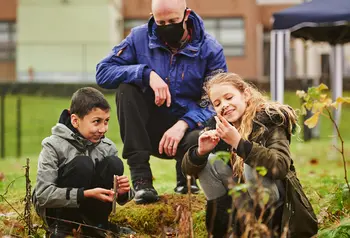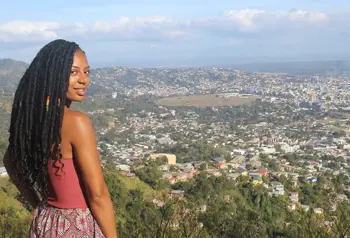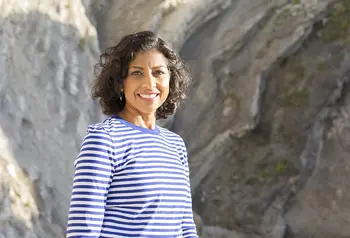Time for a change: outdoor learning for every child
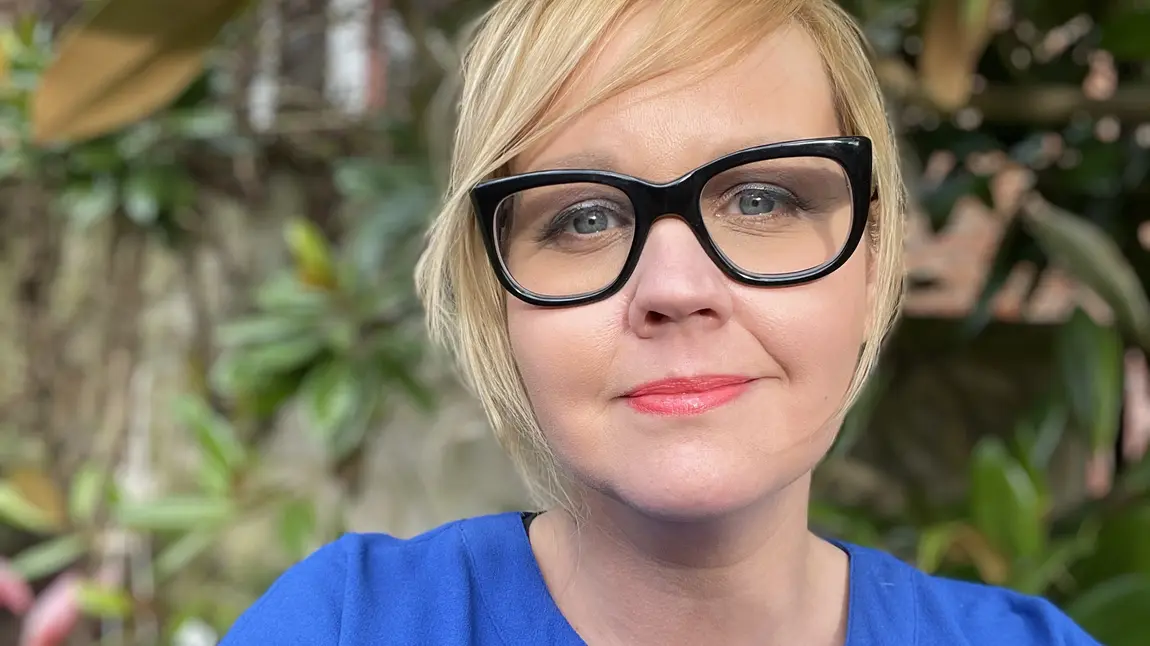
Last spring, Learning through Landscapes worked with The National Lottery Heritage Fund to create My School, My Planet. It’s an outdoor learning programme designed to support children to re-engage with learning, and their natural heritage, as they transitioned into the new academic year following the first lockdown.
We recognised that coronavirus (COVID-19) was having a significant impact on children’s physical activity and wellbeing, especially children from low-income families, disadvantaged ethnic groups and those living in inner cities with limited outdoor space.
Focusing on areas of high deprivation across the four nations, we mobilised the programme at pace and delivered it to 49 schools. More than 1,000 children – from Inverclyde, Belfast and Swansea, to Durham, Blackburn, London and Southampton – benefitted from outdoor learning and support between September and November 2020.
Now, as children again begin returning to schools following the latest round of lockdowns, there is a lot of discussion about what the future of education should look like. I believe that My School, My Planet shows us that outdoor learning should be embedded in every child’s school day.
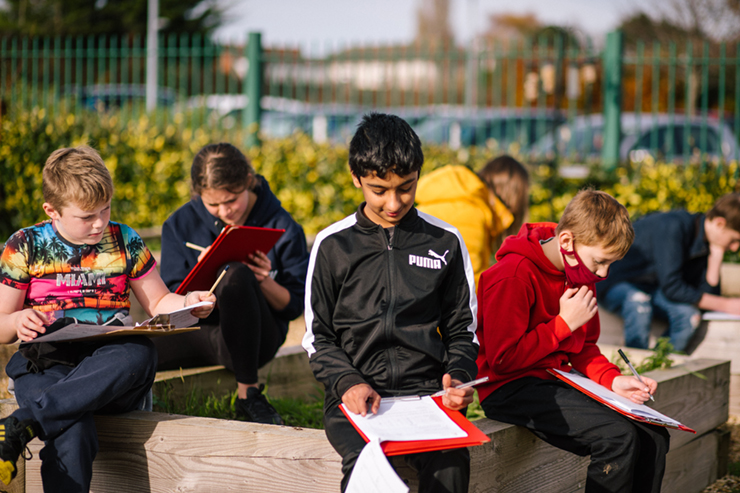
Freedom to learn outdoors
At Learning through Landscapes, we constantly worry about the lack of time children and young people spend outdoors during the school day.
During lockdowns we have all seen the undeniable importance of time spent outdoors and the positive impact it has on mental health and wellbeing. As we came out of the first lockdown, we knew it was more important than ever that as children returned to schools, they should have the freedom to learn outdoors.
During the delivery of My School, My Planet we saw the impact COVID-19 and resulting lockdowns had on pupils. We met children and young people who had lost family members and were still processing their grief. We met children who hadn’t left their homes in over four months, and many who had no access to outdoor space at all during lockdown.
Diversifying the sector
We wanted the programme to have an impact where it was needed most – those children most affected by the pandemic. To ensure we could engage children from disadvantaged and ethnically diverse backgrounds, we were guided by Louder than Words, a non-profit organisation passionate about developing engaging community projects for hard-to-reach young people.
I am acutely aware of the lack of diversity across the natural environment sector. For My School, My Planet, this meant that we struggled to recruit trainers who represented the diversity of pupils in our schools. We worked with young, black climate activists who spoke to me about how important it is for children to see people who look like them in their schools.
This is something that needs addressing urgently. We need to give children the opportunity to work with and be inspired by people who represent them. I hope – if we are able to roll out My School, My Planet across even more schools – that we can use it as an opportunity to bring more diversity into the sector.
If we really want the next generation to engage in environmental issues, then we need to make sure they feel represented and inspired. Without this we risk a whole section of society feeling excluded from the unique natural heritage of the UK.
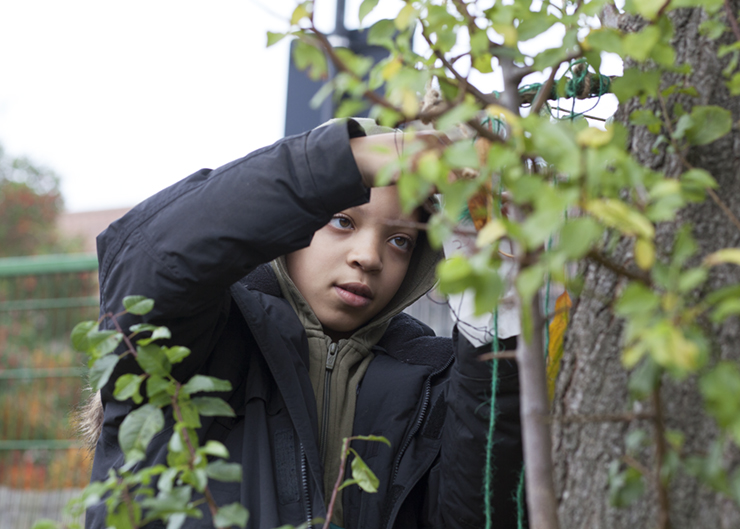
Engaging in the climate crisis
We know that when young people are engaged in their natural environment, they care about it more, and want to protect it.
Pupils participating in My School, My Planet were offered academic learning focused on three core subjects: climate change, soils, and biodiversity. I was surprised to learn that few schools engaged with climate change – only 7 of the 49 schools chose this subject.
For me, this raises a larger question about how engaged young people really are in the climate debate.
I worry that we have seen so much in the press about Greta Thunberg and climate strikes that we have forgotten to ask ourselves: is this a true representation of the young people across the UK? If it is not, what can we do to support young people to engage more in the climate crisis, especially those from ethnically diverse backgrounds and those growing up in poverty?
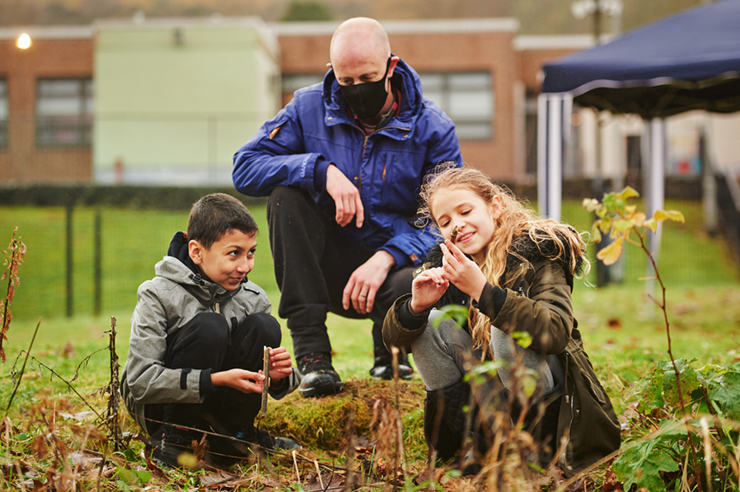
Return to nature
Programmes like My School, My Planet must play a role as children and young people return to school and re-adjust to life after lockdown.
We need to prioritise providing opportunities for pupils to re-engage with school life and a love of learning. We must support young people to spend time outdoors, and we must ensure that they have opportunities to re-build relationships with their peers and with nature.
Our My School, My Planet programme was able to deliver all these benefits to children last autumn following the first lockdown and could support many more as we recover from the pandemic.
About Carley Sefton
Carley Sefton is the CEO of the Learning though Landscapes trust. The trust was set up 30 years ago to support children learning, playing and connecting to nature in their school grounds. Carley joined LtL in 2017 and before that worked for Oasis Community Learning.
- Views expressed in the Future Heritage blog series are those of the authors, not necessarily of The National Lottery Heritage Fund.
